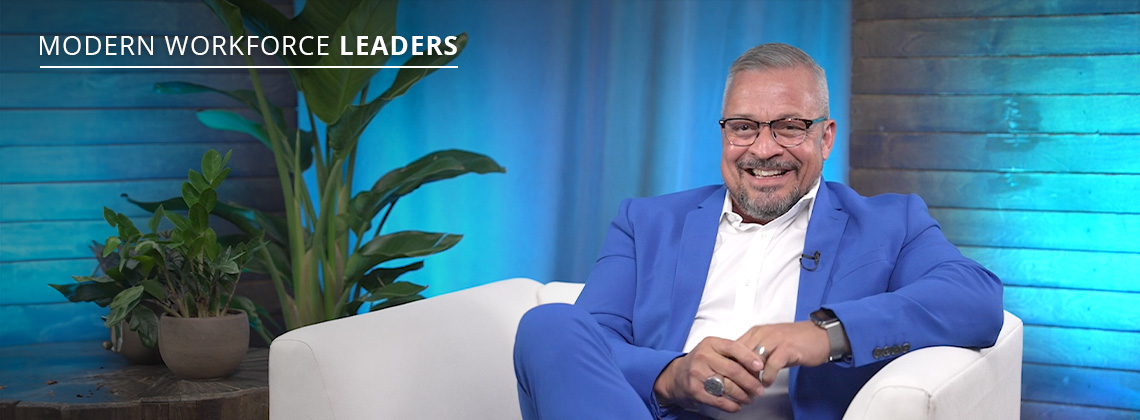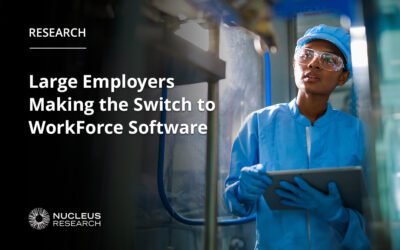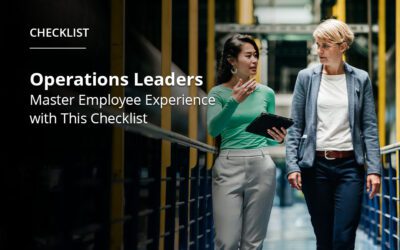Why the Right Technology Can Support an Adaptable Workforce

Modern leadership demands a radical shift in priorities. The intersection of a rapid pace of innovation with the dramatic shifts in workforce demographics means that it vital for leaders to rely on the right workforce management tools. To meet these challenges, agile workforce leaders must leverage technology to better engage with their employees and invest in tools that provide accurate data to make decisions that drive value. Matt Gale, Vice President of Strategic Alliances at Oracle, shares valuable insights on how to use data to steer companies toward growth, scalability, and adaptability.
“What it takes to be a modern workforce leader is, in a word, agility. The future’s happening faster than we planned for. You need to be able pivot and gain an understanding of what’s happening in the marketplace, what’s happening with your customers, and adapt. My advice to others for transforming their workforce is to keep an open mind. Set your assumptions aside. You need to listen to what the workforce is telling you and then adapt accordingly.”
Matt Gale | Vice President of Strategic Alliances at Oracle
This entry in our Modern Workforce Leaders Series emphasizes the necessity for leaders to remain open-minded while evaluating the technology they use to keep their people engaged.
See how the Oracle addressed workforce barriers by modernizing their data collection to better understand how the organization is engaging their people.
Challenges and Opportunities in a Rapidly Evolving Workforce
As we continue to see a rapid evolution in technological capabilities, it is important to consider whether an organization’s current technology is adequately meeting their workforce needs. To achieve success, Matt advocates for a significant shift in business priorities, emphasizing the need for modern leaders to refocus on three critical elements: people, processes, and technology.
Reflecting on recent challenges, Matt acknowledges the seismic impact of the pandemic on work dynamics and how it has shifted the paradigms of engagement and communication. “We’ve seen the growing introduction of workplace communication tools like Slack or Teams that are used effectively sometimes. And at other times I think they add a layer of complexity that causes things to slow down.”
Here, Matt asks leaders to consider the experience of their workforce, acknowledging that bringing effective workforce transformation is often not so simple. The proliferation of real-time communication tools has proven beneficial in many cases, but can easily create noise, making it difficult for employees to know where they should be communicating and when.
Navigating this issue effectively can come down to leadership setting simple that eliminates unnecessary chatter. “Being an agile leader means understanding how and why you’re communicating. For my team specifically, I’ve set parameters. If it’s internal, you use Slack. If it’s external, you use email. Just implementing certain simple rules like that has reduced the noise considerably and made us more effective.” Modern workforce leaders need to have the perspective to question if the technology they are using is bringing the right results.
Investing in Employee Engagement Needs—the Data Imperative
A prevalent pain point in workforce management is the way leaders get accurate data on how employees engage within their organization. The source of this challenge often stems from outdated legacy systems that hinder the delivery of accurate workforce data. This poses hurdles for leaders who are attempting to understand and quantify how employee experience is being delivered in their organization and how that in turn affects customer experience.
“The practical answer to where leaders should prioritize their future technology spend is data—understanding your data, making sure your platform is correct. Choosing to invest in the right platform that will enhance an enterprise’s ability to answer the shifting, growing needs of our customers.” Matt advocates for a modernized approach to data collection, recognizing its potential to offer deeper insights into organizational engagement and workforce dynamics.
Aligning future investments with workforce management platforms that provide accurate, real-time data gives leaders the tools needed to influence their organizations and adapt current practices with future business needs. As organizations come to terms with the significance of employee engagement and workplace satisfaction in shaping a business’s success or challenges, “Investing in platforms that facilitate robust data collection and analysis is imperative.”
Unlocking Organizational Potential Through True Engagement
Agile leaders must have the means to connect with their workforce consistently to understand their needs and give them the tools to meet unexpected challenges. “I think there’s a headspace shift that has created an interesting dynamic. There’s a better understanding of how management and employee relationships continue to drive value and drive the organization’s mission forward. We’re seeing how this depends on keeping employees happy and engaged in the work that they’re doing.”
Oracle’s efforts in fostering connection, engagement, and value among its teams revolve around innovative solutions. Leveraging their state-of-the-art HCM tools internally, Oracle ensures organic, timely, and effective communication channels between management and employees. “At Oracle, we use our product and tools. It allows touch points from management to employee perspectives that are organic, ensuring that, as a leader, that I’m interacting with my team effectively.”
Matt emphasizes the significance of authenticity in employee engagement. Employers must align their business objectives with an understanding of human motivations. This is what enables an organization to adapt quickly and meet emerging customer needs. “As a leader, you have to understand how people are engaging. It is always important to keep the customer in our mind. We have to ask, are we communicating and interacting internally in a way that creates value for our customers?”
Matt Gale’s insights illuminate the realities that shape what it means to be a modern workforce leader. He underscores the necessity of agility, data-driven decisions, authentic engagement, and adaptability in giving the workforce the tools they need to succeed. Oracle’s partnership with WorkForce Software has supported many large organizations, particularly those with robust unions or shift-based work models, in unlocking the potential of an engaged, productive, and resilient workforce.
Hear Matt discuss how investing the workforce management platform can give leaders the tools to create an engaged and adaptable workforce.
Subscribe to The WorkForce Blog
Learn the art and science of maintaining productive, happy, engaged employees.
Discover More
Nucleus Insights from WorkForce Customers Research Note
Nucleus Research interviews WorkForce customers who validate why we’re ranked the #1 WFM enterprise vendor for 10 consecutive years.
Elevate Employee Experience: Checklist for Operational Leaders
Get the practical steps and technology functionalities operation leaders need to improve their employees’ work experiences.
How Scheduling Optimization Can Better Employee Experience
Find out how optimizing your workforce scheduling can positively impact employee engagement.



